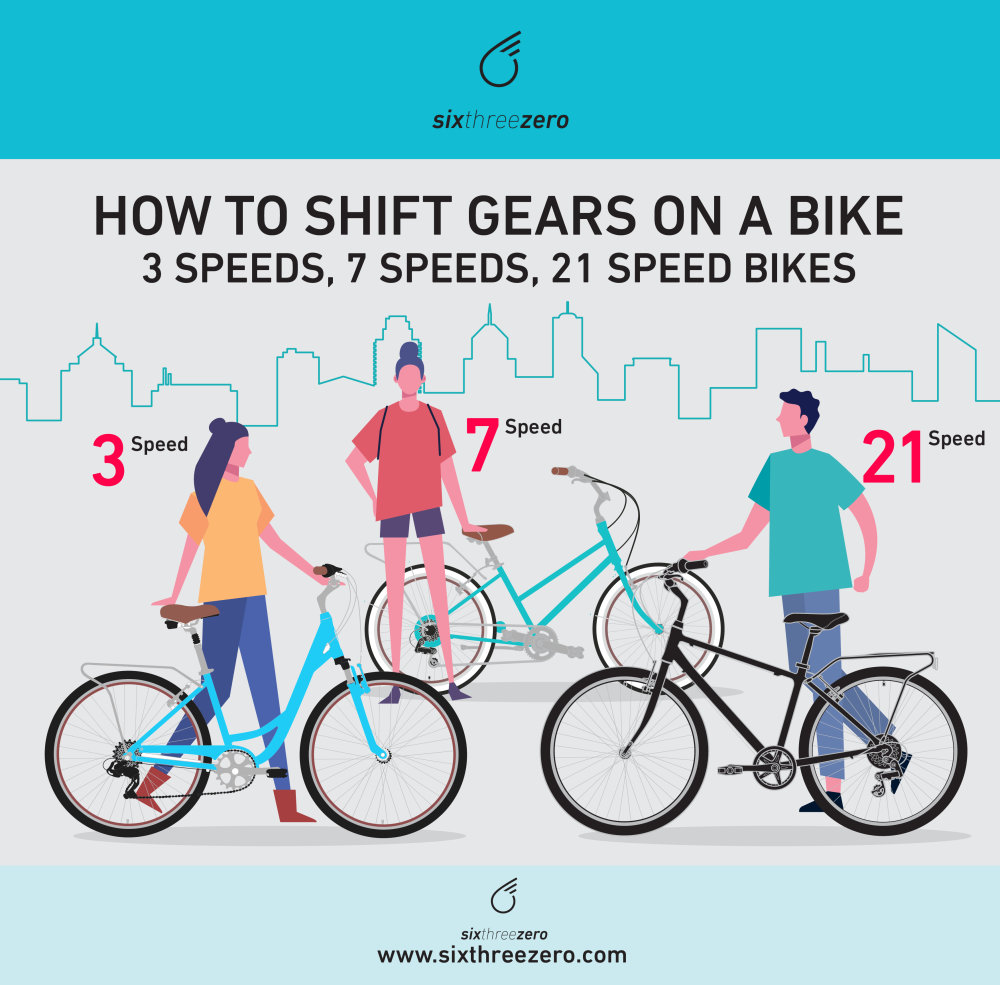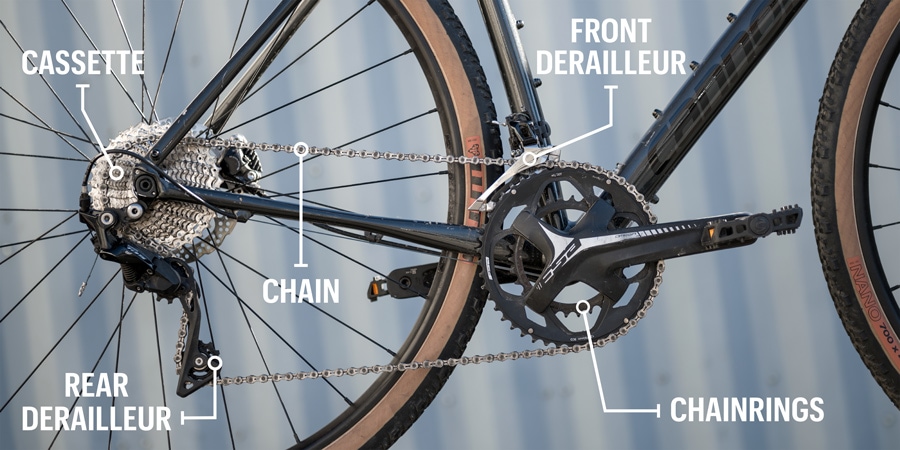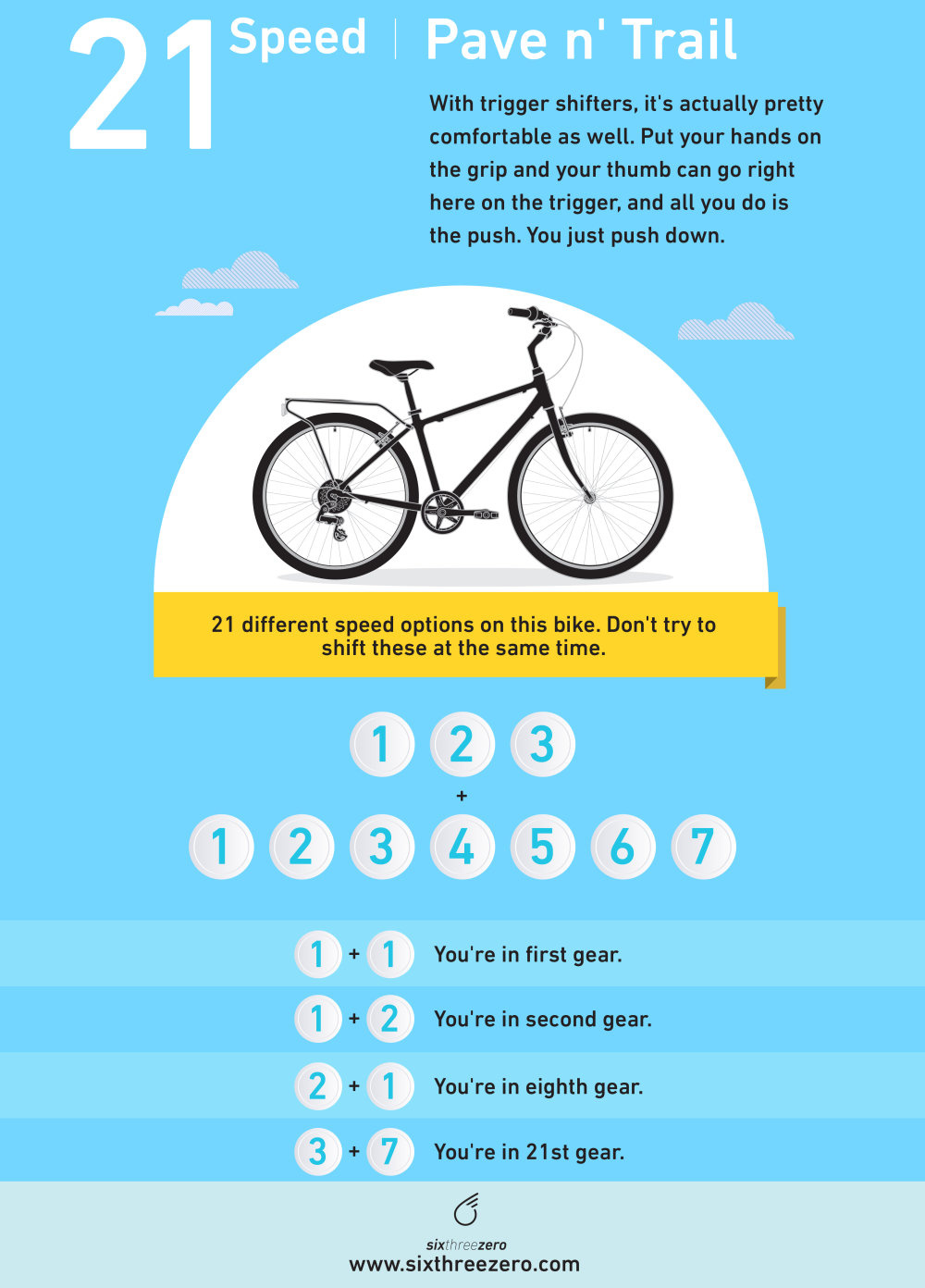Shift gears on a bike when facing changes in terrain or speed. Adjust gears to maintain a comfortable pedaling rhythm.
Cycling efficiently involves knowing when to shift gears. Proper gear shifting helps maintain optimal cadence and reduces strain on your muscles. Beginners might find it tricky at first, but it becomes intuitive with practice. Use lower gears for climbing hills and higher gears for flat terrain or descending.
Shifting gears correctly can make your ride smoother and more enjoyable. Always anticipate the terrain ahead to prepare for gear changes.
By mastering gear shifting, you can enhance your biking experience and improve overall performance. Remember, the right gear at the right time can make a significant difference.

Credit: www.sixthreezero.com
The Essence Of Gear Shifting
Gears help cyclists ride smoothly. They adjust bike speed and effort. Riding uphill needs lower gears. This makes pedaling easier. Flat roads use higher gears. This lets you go faster. Gears help save energy on long rides.
Proper gear use reduces muscle strain. It keeps your ride smooth. You can climb hills with ease. It helps you ride longer distances. Your bike parts last longer with proper gear use. Shifting gears correctly is key to a good ride.

Credit: www.rei.com
Identifying The Right Time To Shift
Choose low gears for uphill rides. High gears work best downhill. Flat roads need medium gears. Adjust gears for smooth and easy pedaling.
Maintain a steady pedaling rhythm. Shift gears if pedaling becomes hard. Faster speeds may need higher gears. Lower gears help with slow speeds.
Gear Shifting Techniques
Shift gears smoothly to avoid sudden jolts. Use the right hand to shift rear gears. Use the left hand to shift front gears. Pedal lightly while shifting to protect the chain. Practice makes shifting smooth and easy. Always listen to your bike’s sounds.
Shift to low gears when climbing hills. Use high gears on flat roads. Anticipate the terrain ahead for smoother rides. Keep your cadence steady for comfort. Shift one gear at a time for control. Avoid shifting under heavy load to prevent damage.
Common Gear Shifting Mistakes
Cross-chaining happens when your chain is at an angle. This occurs when you use the big ring with the big cog. It also occurs with the small ring and small cog. Cross-chaining wears out your chain fast. It can also damage your bike’s drivetrain. Always use gears in a straight line. This will help your bike last longer. It also makes pedaling easier.
Gear skipping happens when your chain slips. This can cause accidents. It usually occurs when gears are not aligned. Regular maintenance helps prevent this issue. Jamming happens when the chain gets stuck.
This can damage your bike. Always shift gears smoothly. Avoid shifting under heavy load. This will keep your bike running smoothly. Regular checks can help prevent jamming. Always keep your chain clean and well-lubricated.
Optimizing Gear Use On Uphill Climbs
Lower gears make climbing hills easier. Shift to a lower gear early. This helps maintain your speed. Keep pedaling smoothly to avoid stops. Practice shifting gears often.
Consistent pedaling keeps your bike steady. Avoid sudden stops by planning shifts. Lower gears help keep your balance. Stay seated for more control. Stand only if needed.

Credit: cycling.today
Navigating Downhill And Flat Terrains
Shifting gears helps maintain speed. On flat roads, use a middle gear. This gear keeps pedaling easy. Speed increases without much effort.
Downhill rides need a high gear. Pedaling becomes hard but faster. Enjoy a smooth ride downhill. For uphill rides, choose a low gear. Pedaling is easy but slow.
Shift gears before a hill. Keep pedaling smoothly. Listen to your bike. If pedaling is hard, use a lower gear. If pedaling is too fast, use a higher gear.
Practice makes perfect. Learn your bike’s gears. Each ride gets better with practice.
Advanced Gear Shifting Strategies
Think ahead when racing. Shift gears before big hills. This keeps your speed steady. Always watch the road. Look for changes ahead. Gear down before you climb. Gear up before you descend. This keeps you in control. Practice makes perfect. Anticipate turns and curves. Shift early for smooth riding.
Wet roads need careful shifting. Use lower gears for grip. Dry roads allow faster speeds. Use higher gears here. Wind can slow you down. Shift to lower gears facing wind.
Shift to higher gears with wind at your back. Muddy roads need low gears. This helps in tough conditions. Always stay alert.
Maintaining Your Gear System
Shift gears on a bike to maintain an efficient pedaling cadence. Change to a lower gear on inclines and a higher gear on flat terrain for smoother rides.
Regular Cleaning And Lubrication
Clean your bike gears often. Dirt can cause wear and tear. Use a soft brush to clean the gears. After cleaning, dry the gears well. Lubricate the gears to keep them smooth. Use oil made for bikes. Do not use too much oil. Wipe off extra oil with a cloth. Check the gears after each ride. Clean and oil them if needed.
When To Seek Professional Tuning
Gears might need tuning if they skip. Strange noises can also mean issues. Visit a bike shop for tuning. Professionals can fix gear problems. They have special tools. Do not try to fix complex issues at home.
It can make problems worse. Seek help if gears feel stiff. Professional help can keep your bike in good shape.
Frequently Asked Questions
When Should I Shift Gears On My Bike?
Shift gears on your bike when pedaling becomes too easy or too hard. Change gears before climbing hills or accelerating. Adjust gears to maintain a steady pedaling rhythm.
Should You Shift A Bike While Pedaling?
Yes, you should shift a bike while pedaling. This ensures smoother gear changes and reduces strain on the bike’s components.
How Do You Know When To Shift Gears?
Shift gears when the engine’s RPMs are too high or too low. Listen for engine noise changes.
How Should A Beginner Change Gears On A Bike?
To change gears on a bike, shift to an easier gear for uphill and a harder gear for downhill. Pedal smoothly while shifting. Avoid cross-chaining by not using extreme gear combinations. Practice makes perfect.
When Should I Shift Gears On A Bike?
Shift gears when facing inclines, declines, or changes in speed to maintain a comfortable pedaling rhythm.
Conclusion
Mastering gear shifting on your bike enhances your riding experience. Practice makes perfect, so keep experimenting and learning.
Proper gear usage can improve speed, efficiency, and comfort. Remember, listening to your bike and body helps in choosing the right gear.
Happy cycling and enjoy smoother rides!

Steven is a professional cyclist and his passion is cycling. He has been cycling for the last 6 years and he loves using bikes while outing as well. Based on his experiences with the different types of bikes; he is sharing his opinions about various bikes so that a beginner can start right away. Find him on Twitter @thecyclistguy Happy Biking.


Leave a Reply